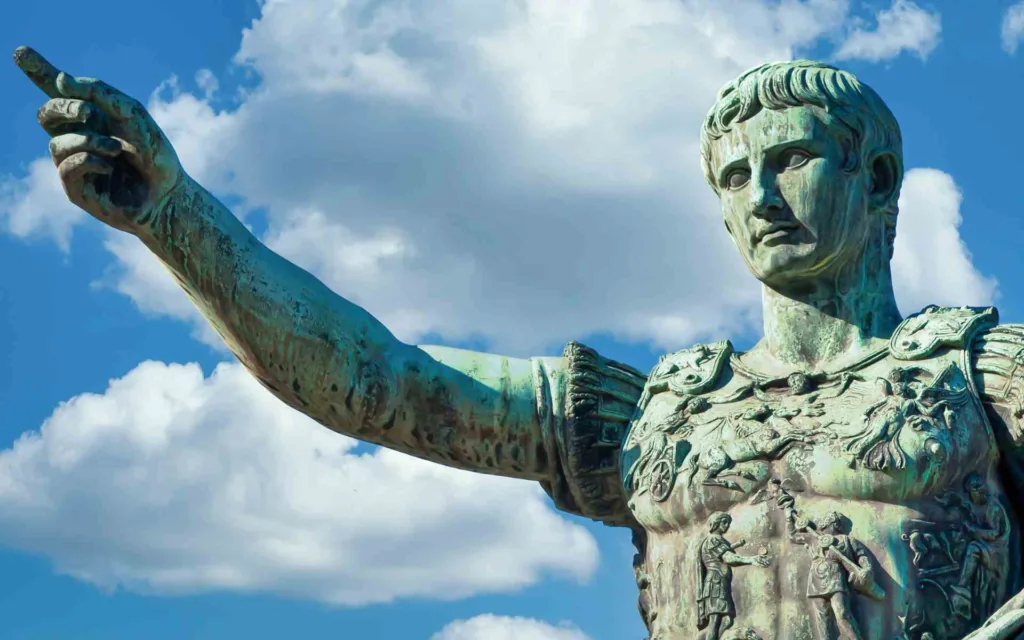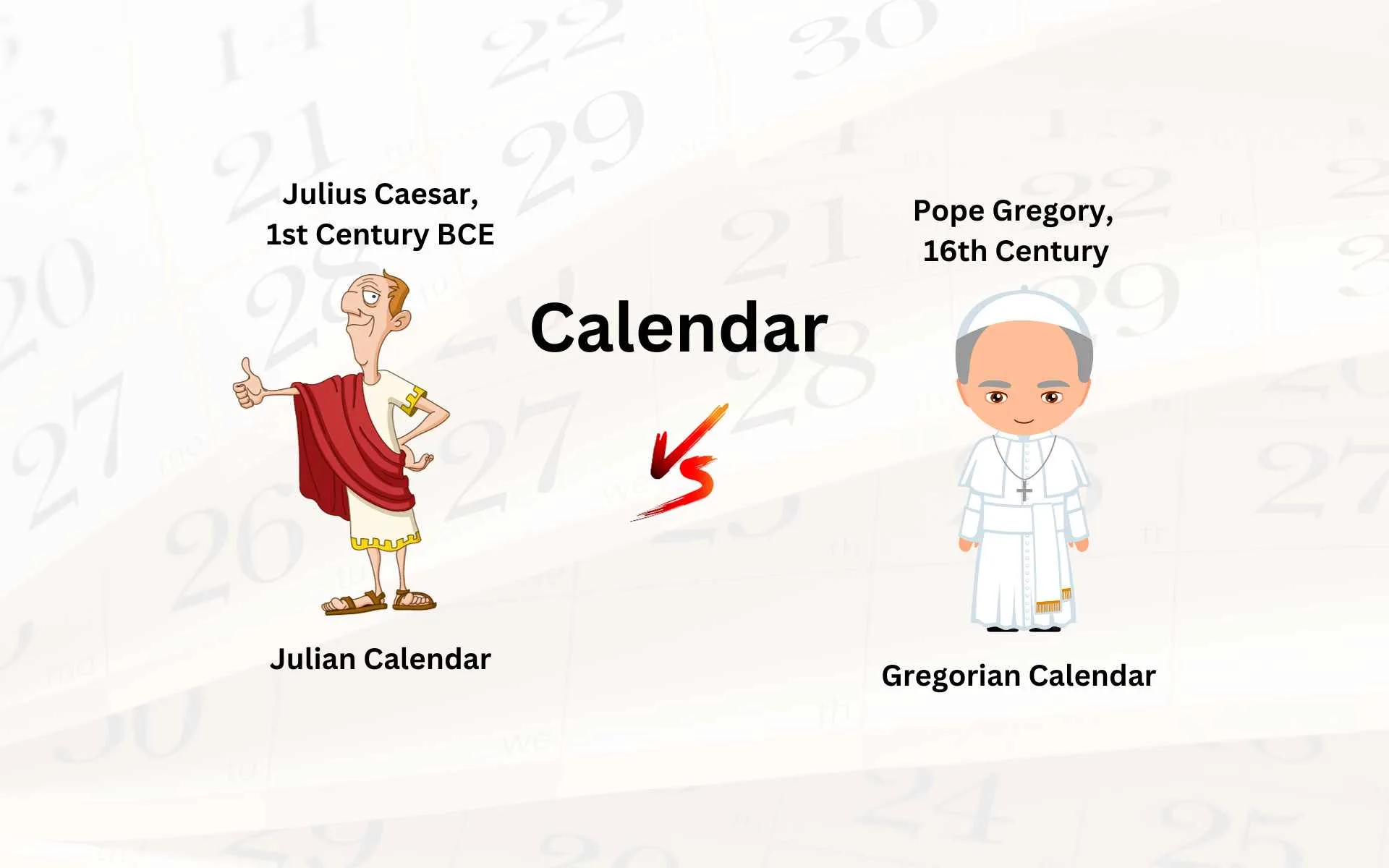The Gregorian calendar was created by Pope Gregory in 1528 CE to rectify the slipping ahead of the Julian Calendar which was the standard calendar of the Roman Empire and also the Catholic Church in Rome.
It is to be noted that the Eastern Orthodox Church in Greece and Eastern Europe still follow the Julian Calendar.


Table of Contents
Origin of the Julian Calendar
The Julian Calendar was introduced by Julius Caesar in 45 BCE, it was the standard Roman Empire Calendar and was both used by the Roman State. It was used by Roman Catholic Church till 1528 AD.
Julius Caesar found that usage of several calendars in the Roman empire introduced several inaccuracies during his campaigns during the Roman Civil War.

A new calendar was introduced on the advice of Sosigenes, an Egyptian astronomer from Alexandria. He advised Caesar to use a solar calendar with 365 days and 6 hours length.
The calendar has 30 or 31 days usually but for February, it contained 28 days and in a leap year, 29 days. Because of confusion, the calendar was not established properly till 8 CE as Sosigenes had overestimated the actual length of the year by 11 min and 14 seconds.
Julius Caesar also had an idea that his calendar slipped ahead of time and added days to 46 BCE which took the total number of days in that year to 445.
Inaccuracy of the Julian Calendar
The Julian Calendar had two inaccuracies which led to an error in calculations over time.
- Julian Calendar overestimates the length of a solar year by 11 minutes.
- The no of extra days for leap years is more in Julian Calendar.
Let us understand in detail.
The Julian Calendar’s estimate of a solar year was fairly accurate at 365 days and 6 hours which is an overestimation by 11 minutes. These extra 11 minutes introduces an extra day every 131 years.
This caused the Julian Calendar to race ahead of time and miss the day for critical festivals. This overestimation would make solar and winter solstice to appear on different days over the years.
By the year of 1528 CE, the Julian Calendar was around 10 days ahead of the actual solstice events.
#DO YOU KNOW?
The current Julian Calendar is 13 days ahead of Gregorian Calendar which will become 14 days by the year 2100 CE. This introduces separate Christmas days for the Roman Catholics (Dec 25) and Eastern Orthodox (January 7).

Why the Gregorian Calendar was Introduced?
The Gregorian Calendar was introduced by Pope Gregory in the year of 1528 CE to rectify the inaccuracies of Julian calendar which rectified the measurement of Solar Year from Julian Calendar’s 365.25 days to 365.24 days.
How the Gregorian Calendar Rectifies Julian Calendar’s Slipping Ahead?
Gregorian Calendar rectified the way in which leap years were added to the calendar. In Julian calendar, every fourth year was a leap year. However, in the case of Gregorian Calendar, the leap years were removed from those years which were divisible by 100. However, for years which were divisible by 400, the leap year would still exist.
Let me explain this with 3 examples.
- The year 2024 would be a Leap Year because it is divisible by 4.
- The year 2100 would not be a leap year as 2100 is divisible by 4 and 100.
- The year 2400 would be a leap year because it is divisible by 4, 100 and 400.




